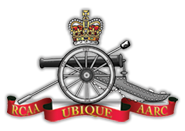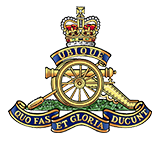The War in Afghanistan 2002-14
On September 11, 2001 a series of coordinated and devastating terrorist attacks were launched in the United States by the terrorist organization al-Qaeda which killed almost 3,000 people, mainly civilians. Canadians were among the dead. These attacks marked the beginning of a concerted effort by the U.S. and its allies to destroy international terrorism as a threat to world peace and security – an effort christened the “War on Terror”. It was quickly determined that the extreme fundamentalist Taliban government of Afghanistan was harbouring al-Qaeda terrorists and facilitating their training. The result was an invasion by the U.S. and allied nations which overthrew the Taliban and ushered in a long and difficult counter-insurgency campaign.
Canada committed a battle group (BG) to fight with the allies in 2002. C Bty deployed from 1 RCHA as part of the initial Canadian BG based upon 3 PPCLI as part of US 3rd Bde Cbt Tm, 187 Infantry “Rakkasans” of the 101st Airborne Division. The Battery deployed with the BC, FOO parties and a Mortar Troop equipped with four 81mm mortars. The Battery took part in air assault operations designed to destroy the Taliban and helped to defend the Kandahar airfield. No major engagements occurred, but the Battery did fire one mission with HE against a suspected Taliban mortar position. The Battery also fired numerous Illumination missions supporting 120mm mortars fired by the US Rangers defending Khandahar Airfield (KAF) from Taliban attacks.
From 2003 to 2004, F Bty, 2 RCHA and X Bie, 5 RALC deployed LG1 105mm howitzers, Light-weight Counter Mortar Radars (LCMR) and UAVs in Kabul. These batteries were very large, with some 225 personnel and were deployed in two firebases: Camp WAREHOUSE and Camp JULIEN. The deployment ultimately saw some 75 Gunners at WAREHOUSE with two LG1 howitzers, Battery HQ and the LCMR Troop (less one detachment) and 150 personnel at JULIEN with 2 LG1 howitzers, an LCMR detachment and the UAV troop equipped with the Sperwer UAV. No enemy targets were engaged during this phase of the war, but the presence of the battery materially increased the security of coalition forces in the area. From August 2004 until February 2006, the Canadian deployments in Kabul relied upon allied artillery support but included Canadian FSCC and FOO parties. Overall, Canadian casualties were very light during the operations in Kabul.
Beginning in 2003, 4 AD Regt deployed an Airspace Coordination Centre (ASCC) to support the Canadian efforts. The Regiment has maintained an ASCC in theatre continuously since that time. 4 AD Regt also deployed significant numbers of soldiers as UAV Tp personnel.
In Feb 2006, the Canadian BG moved south to Khandahar, where combat operations were much more intense. The Canadians needed artillery support for this new area of operations and the M-777 light 155mm howitzer was rushed into service with 1 RCHA in order to fill this gap. A Bty deployed with four guns in Feb 2006 with the 1 PPCLI BG. From 2006 until the summer of 2011, a Canadian gun battery with 4-6 M-777, Locating Tp and UAV Tp was deployed in theatre. Each rotation was composed of a battery from one of the Regular Force field regiments with significant reinforcement by the Reserve Force. On average, several thousand operational rounds were fired by each battery during a tour of 6-8 months. The guns were normally deployed in two-gun Troop firebases to provide support for Canadian and allied operations which occurred principally in Khandahar and Helmand Provinces.
Harkening back to the Korean War and showing that Canadian Gunners still meet the high standards set for them by their predecessors, both the PPCLI and the RCR asked that the guns of the Batteries that supported them be emblazoned with their Regimental badges in recognition of the outstanding support given to them by “their” Gunners.
Hundreds of Canadian Gunners also served in theatre in other roles such as the Provincial Reconstruction Team (PRT) which conducted “heart and minds” tasks; the Operational Mentoring and Liaison Teams (OMLT) tasked with training the Afghan National Army and the Strategic Advisory Team (SAT) which provided a long-term planning capability for the Afghan government.
By May 2011, eight Gunners had been killed in action since the move south in 2006 and dozens of others had been wounded or injured. The war is the longest continuous deployment of Canadian Gunners in combat operations since 1855.
In 2011, the Canadian mission transitioned from a combat role to a mission of training the Afghanistan military. This training role concluded in the spring of 2014, concluding the CAF’s time in Afghanistan.
The war resulted in a re-organization of the field regiments in Canada in order to better meet the demands of mounting a very large and complex gun battery for long-term operations. In 2010, each of the Regular regiments was organized into two field batteries equipped with the M-777, an OP battery and a locating battery. This re-organization saw the return of V, Y and Z Batteries from the Supplementary Order of Battle to 5 RALC, 2 RCHA and 1 RCHA respectively. As of 2011, A, B, C, D, E, F, Q, R and X Batteries had all served one or more tours in theatre as gun batteries since 2002 and The Royal Regiment was better equipped for war that at any time since the early 1950s.


